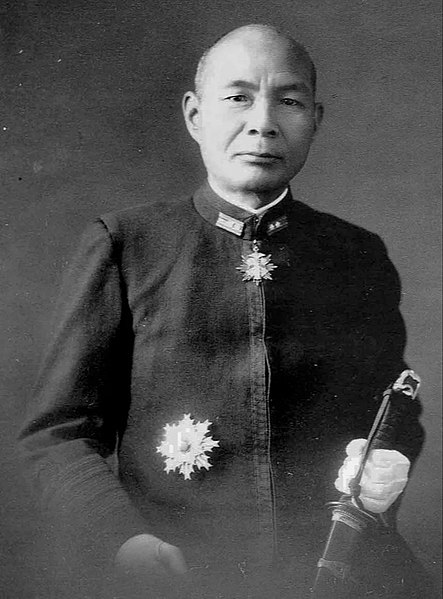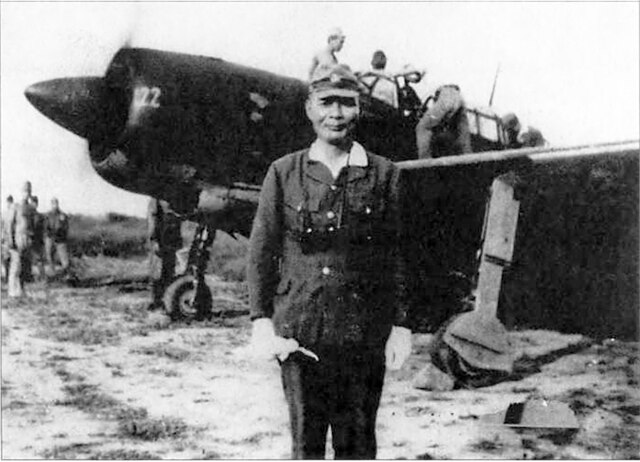Matome Ugaki was an admiral in the Imperial Japanese Navy during World War II, remembered for his extensive and revealing war diary, role at the Battle of Leyte Gulf, and kamikaze suicide hours after the announced surrender of Japan at the end of the war.
Vice Admiral Ugaki Matome (1942–45)
Ugaki as captain 1932–38.
Yamamoto and Ugaki in the bridge of Combined Fleet flagship Nagato, August 1941 - February 1942
Ugaki on 15 August 1945 before his final kamikaze mission.
Kamikaze , officially Shinpū Tokubetsu Kōgekitai , were a part of the Japanese Special Attack Units of military aviators who flew suicide attacks for the Empire of Japan against Allied naval vessels in the closing stages of the Pacific campaign of World War II, intending to destroy warships more effectively than with conventional air attacks. About 3,800 kamikaze pilots died during the war, and more than 7,000 naval personnel were killed by kamikaze attacks.
USS Bunker Hill, an aircraft carrier, was hit by two kamikazes on 11 May 1945, resulting in 389 personnel dead or missing and 264 wounded.
Kamikaze was a reference to the two typhoons that sank or dispersed Kublai Khan's invading Mongol fleets.
Lt. Yoshinori Yamaguchi's Yokosuka D4Y3 (Type 33 Suisei) "Judy" in a suicide dive against USS Essex on 25 November 1944. The attack left 15 killed and 44 wounded. The dive brakes are extended and the non-self-sealing port wing tank trails fuel vapor and/or smoke.
Model 52c Zeros ready to take part in a kamikaze attack (early 1945)








